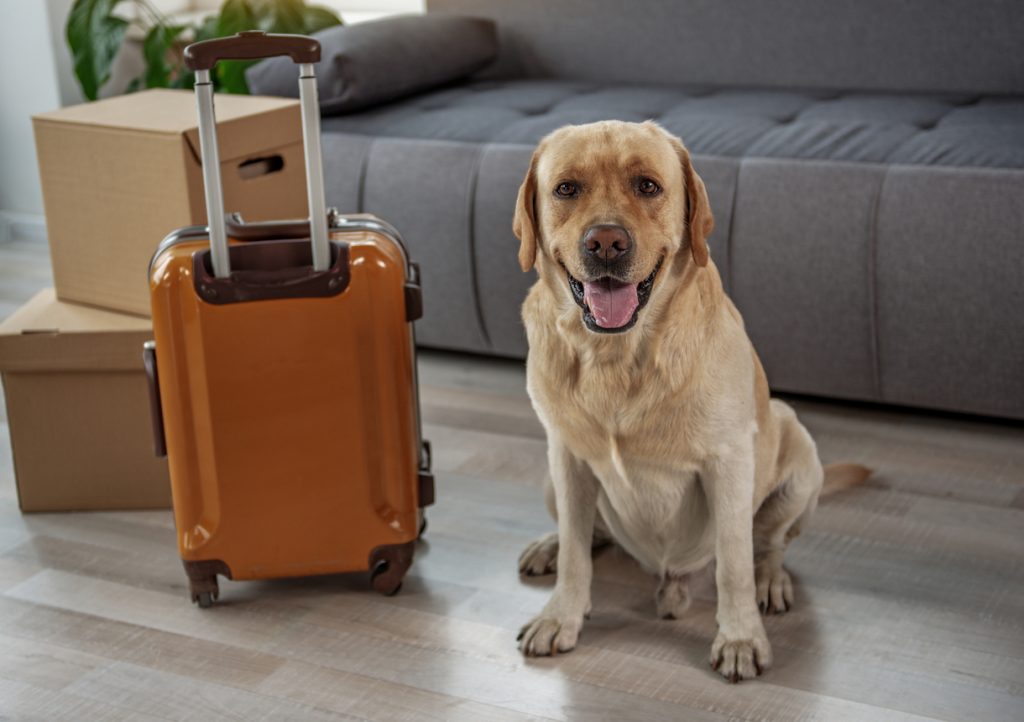Every people move due to some personal or professional reasons, it is mandatory that they need to know if the place where they are moving is okay with pets or not. If you happen to be among those people who consider their pets as their babies, then this blog is totally for you. Here is a moving guide if you have a pet or pets, remember that they also experience stress, particularly from moving. In many cases, moving can be even more stressful on pets, as the home is their habitat. Pets can also become very frightened when faced with unfamiliar situations. Careful organization and planning can make the moving process easier and less stressful for both you and your pet. Our guide offers tips and advice to help you and your pet through this process.

Pet travel warning
Never move a sick pet – the move may aggravate his symptoms and be dangerous to his health.
The Animal Welfare Act makes it illegal to transport puppies and kittens less than eight weeks old by air.
Pets cannot be moved on a moving van with your household belongings.
Pets are generally not allowed on trains or buses, unless they’re guide-dogs accompanying blind or otherwise impaired persons.
Book a direct flight if you are traveling by plane. If your pet is traveling in freight he may be sitting outside with the freight for a long period of time between flights and as the freight is being moved from plane to plane. If the weather is either too hot or too cold your pet will suffer. An insulated crate will certainly help this situation if it cannot be avoided.

Air Transport
You may transport your pet by air either accompanying you or as air freight. Some airlines provide counter-to-counter service so your pet will be carried on and off the plane by an airline employee. Remember, not all airlines accept pets for transportation, so be sure to inquire when you are making your travel arrangements. Also be sure to check about charges and insurance charges for transporting your pet.
It is important that you book your air travel as early as possible. Airlines that accept pets for transportation will have specific regulations and guidelines regardless of whether the pets are accompanied or unaccompanied. For example, you may be required to be at the airport several hours in advance of the flight to check your pet in and your pet may need a special crate. The airline may be able to provide to you a crate for the trip, or you may have to purchase one from the airline.
The airline will have guidelines on the crate types allowed and your local pet supply company will be able to sell you the required crate. You pet should be able to stand and turn around with ease and there should be adequate ventilation. The bottom of the crate should be padded with newspaper or other absorbent material. Add a favorite toy on move day to give a sense of security. Try to get your pet accustomed to the crate at home before the big day.

On move day, feed and water your pet at least 5 hrs before the flight departure time and water again at least 2 hours before departure. Remember to administer any medication or veterinarian-recommended tranquilizers before departure. When you arrive at the airport, exercise your pet and check that you have provided all the necessary information to airline staff regarding your name, correct new address and alternate contact name in case of emergency.
Some airlines allow passengers to bring pets into the cabin with them, provided they fall within a specific size range and stay in a carrier for the duration of the flight.
By road – In a motor vehicle
Unless you are planning a very short road trip, do not feed or water your pet for a couple of hours before leaving. You may decide to put your pet in a crate during the road trip, but be sure he is able to stand and turn around with ease and that there is adequate ventilation. The bottom of the crate should be padded with newspaper, towels or other absorbent and cushioning material. Adding a favorite toy will help give a sense of security. Exercise your pet regularly during the road trip, but always use a leash because your furry friend can easily get lost or hit by a car if he wanders off.
Do not let your pet hang his head out the window while the car is moving. While many dogs love to do this, it can cause sore eyes, ears or throat. And, never let the windows down so far that your pet can jump out.
Warning
Never leave a pet in a hot car during the summer or in a cold car in the winter. Temperatures inside a car with closed windows escalate dramatically when it’s parked in the sun. Even if it’s pleasant outside, it takes only a few moments to reach over 100 degrees inside the car – which can be fatal for small occupants. If you absolutely have to leave your pet briefly, and the day is hot, park in the shade, lock the car doors and crack the windows open several inches to provide cross-ventilation. Check on him regularly. If the day is very hot, it is best not to leave your pet in the car at all.
Pet’s travel bag
Don’t forget to pack a travel bag for your pet! Following is a list of items you may wish to include;
Food and can opener
Food and water dishes
Any medication your pets needs
Treats
Favorite toys
Leash
Grooming brush
Bags to clean up after your pet
Newspapers
Cleaner and paper towel
Whatever mode of transport you use for your pet, make sure you are in compliance with state and local regulations for animals in your destination city, along with current copies of.
ID tags
Health records
Pets ID tags
The state where you are moving may have different laws regarding animals and their entry across state lines. It is important that you understand the requirements so that you can comply with them, so contact the state veterinarian for specific information. It is not uncommon for pets to need an entry permit in order to enter a new state. As well, in many towns and cities the number of pets per household may be limited. You will be required to obtain a local license for your pet within a certain deadline, such as 30 days, so find out what it is. You don’t want to pay a fine for not keeping your pet’s license current!
Find out more about the health certificates that you need when moving with your pets in the second part of this blog!


